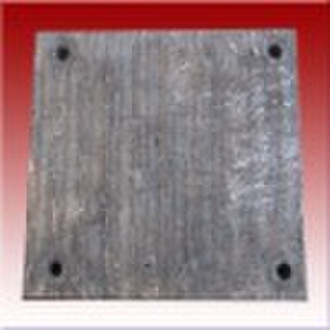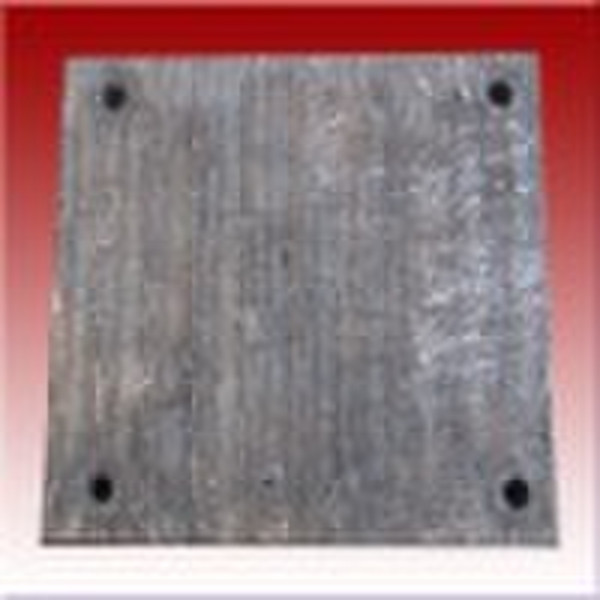Catalog
-
Catalog
- Agriculture
- Apparel
- Automobiles & Motorcycles
- Beauty & Personal Care
- Business Services
- Chemicals
- Construction & Real Estate
- Consumer Electronics
- Electrical Equipment & Supplies
- Electronic Components & Supplies
- Energy
- Environment
- Excess Inventory
- Fashion Accessories
- Food & Beverage
- Furniture
- Gifts & Crafts
- Hardware
- Health & Medical
- Home & Garden
- Home Appliances
- Lights & Lighting
- Luggage, Bags & Cases
- Machinery, Hardware & Tools
- Measurement & Analysis Instruments
- Mechanical Parts & Fabrication Services
- Minerals & Metallurgy
- Office & School Supplies
- Packaging & Printing
- Rubber & Plastics
- Security & Protection
- Service Equipment
- Shoes & Accessories
- Sports & Entertainment
- Telecommunications
- Textiles & Leather Products
- Timepieces, Jewelry, Eyewear
- Tools
- Toys & Hobbies
- Transportation
Filters
Search
Wear plate
original price: 80,00 USD
Rizhao, China

Seth Ding
Contact person
Basic Information
Hard Wear Plate TM is a composite wear plate consisting of a low carbon or alloyed steel base plate and a layer of wear resistant deposit. Our resurfacing welding Hard Wear Plate TM combined with the specially formulated hardfacing alloys produces the harder, tougher and better wear resistant plates. The low carbon steel base plate enables the plate to be welded, bolted or studded to existing structures, while the hardfacing provides the premier wear-resistant surface capable of working in all applicable service conditions at either ambient or elevated temperatures. Due to its excellent properties, long-lasting service life and superb performance. Hard Wear Plate TM is wildly used in various kinds of industries such as steel-making, mining, power plant, cement industry, dredging and so on where good resistance to abrasion, gouging, grinding and impingement erosion, cavitation and flow-assisted solid particle erosion. The optimum application of the composite plate includes large-area wearing-related equipments for storage, transportation or conveyance.In general, the base metal of Hard Wear Plate TM is either a low carbon steel or low alloy steel with the thickness of 6-40 mm while the deposit is Hard Wear Plate TM specially formulated hardfacing material with the thickness of 4 mm to 10 mm. The wear plate can be manufactured according to customers requirements, including the size and shape of the composite plate, the type and thickness of the base metal and the type of the hardfacing material, or the standard size plate can be purchased from Selection Guide according to customers working conditions and applications and be further welded or formed following the Welding & Forming Guiding below: Cutting: The wear plate can be cut into required shape and size using plasma-arc. Bending: The wear plate can be bent into the proper arc-shape or cone in the assist of a press or roller. Welding: The base metal of the wear plate has good weld ability. The wear plates can be welded together to form butt joints or can be welded onto other steel components. Plug-Joint: The wear plate can be joined to other structure using plug-form through cutting a hole in the wear plate using either plasma arc or carbon arc and then being plug-welded together. Bolting: The wear plate can be bolted onto other structure. The bolt hole(s) can be pre-designed in the wear plate according to customers drawing or requirements and the wear plate is joined with other components using countersunk bolts. Also, bolts can be re-placed on the base metal of the wear plate by flash, arc or stud welding, and then the wear plate can be directly bolted onto other components.Our company is a professional enterprise specializing in the production and processing of all kinds of wear-resistant steel sheets. Our company has a fully automatic production line. The wear resistance of our steel plates is 2-3 times more than ordinary wear-resistant plates on average. Our products are widely used in cement, steel, electric power, shipbuilding, fans, mining machinery, and chemical machinery industry
Delivery terms and packaging
Packaging Detail: Packing by stillage Delivery Detail: Within 30 Days (As per your request)
Port: QingDao port
Payment term
Letter of credit
-
Payment Methods
We accept:









